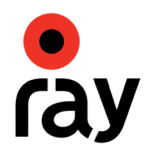Enhancing Healthcare with Non-Contact Sensors and Breathing Pattern Analysis
In recent years, advancements in smart healthcare technology have revolutionized patient monitoring, diagnostics, and overall healthcare management. One of the most promising developments is the integration of non-contact health sensors and breathing pattern analysis into healthcare systems. These technologies are opening new doors for non-invasive, real-time health monitoring, making patient care more efficient, accurate, and accessible. Let’s explore how these innovations are shaping the future of healthcare.
The Power of Non-Contact Health Sensors
Traditional health monitoring systems often require physical contact with patients, such as ECG leads, pulse oximeters, or blood pressure cuffs. While these methods are effective, they can be cumbersome, uncomfortable, and limiting in certain scenarios—especially for continuous monitoring. This is where non-contact health sensors come into play.
Non-contact sensors, as the name suggests, do not need to touch the body to collect data. They use advanced technologies such as radar, infrared, and thermal imaging to monitor vital signs like heart rate, respiration, and even movement. These sensors can be embedded in everyday objects, such as beds, chairs, or even smartphones, allowing for seamless monitoring in hospitals, homes, or care facilities.
The biggest advantage of non-contact health sensors is their ability to continuously and unobtrusively gather health data. This makes them ideal for elderly patients, infants, or individuals with mobility issues, who may find traditional monitoring devices uncomfortable or impractical.
Breathing Pattern Analysis: A Window to Health
Breathing is a fundamental physiological process, and abnormalities in breathing patterns can indicate a wide range of health issues. From sleep disorders such as sleep apnea to early signs of respiratory infections or even cardiovascular diseases, analyzing a person’s breathing pattern provides crucial insights into their health.
Breathing pattern analysis involves monitoring the rate, depth, and rhythm of breathing. When combined with non-contact sensors, this analysis can be done in a completely non-invasive manner. For example, a non-contact radar sensor placed in a room can detect subtle chest movements and use algorithms to analyze breathing patterns. Over time, these patterns can be compared against baseline data to detect abnormalities, providing early warnings for potential health concerns.
Smart Healthcare Technology: Bridging the Gap
Smart healthcare technology is the backbone that integrates non-contact sensors and breathing pattern analysis into a cohesive system. With the help of artificial intelligence (AI) and machine learning (ML), these technologies can analyze vast amounts of data to detect patterns and predict potential health issues before they become critical.
Imagine a patient with a chronic respiratory condition. Non-contact sensors placed in their home can continuously monitor their breathing patterns. If the system detects irregularities, such as shallow breathing or an increased respiratory rate, it can trigger an alert to the patient’s healthcare provider, who can then take preemptive action, potentially preventing a hospital admission.
This real-time, remote monitoring capability is especially valuable in managing chronic diseases, where continuous monitoring is key to preventing complications. It also helps reduce the burden on healthcare facilities, allowing patients to receive high-quality care without constantly visiting the hospital.
Applications and Future Prospects
The potential applications of non-contact health sensors and breathing pattern analysis are vast. In addition to managing chronic diseases, these technologies can be used in the following areas:
1.Sleep Monitoring: Non-contact sensors can track breathing patterns during sleep to detect disorders like sleep apnea, improving diagnosis and treatment outcomes.
2. Post-Surgical Care: Continuous, non-invasive monitoring of vital signs, including breathing, can help healthcare providers detect complications early, reducing hospital readmissions.
3. COVID-19 and Respiratory Illnesses: Early detection of irregular breathing patterns could aid in diagnosing and managing respiratory infections, including COVID-19, from the comfort of a patient’s home.
4. Telemedicine: With the rise of telemedicine, these technologies can provide remote health assessments, enabling doctors to monitor patients in real time without physical visits.
Conclusion
The integration of non-contact health sensors and breathing pattern analysis into smart healthcare technology is transforming the way healthcare is delivered. These innovations offer a non-invasive, continuous, and convenient method of health monitoring, providing real-time data that can help detect issues early and improve patient outcomes. As these technologies continue to evolve, they hold immense potential to reshape healthcare delivery, making it more patient-centric, proactive, and efficient.
By enhancing the ability to monitor vital signs and analyze breathing patterns without physical contact, smart healthcare systems are becoming more adaptable and capable, bringing us closer to a future where high-quality care is accessible to everyone, anywhere.
